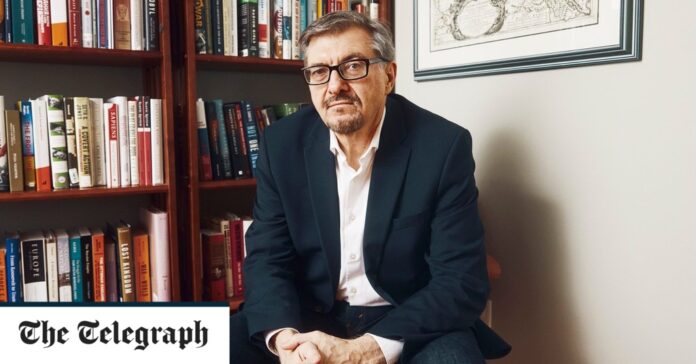The celebrated historian and professor of Ukrainian history has studied the parallels between the 1930s and the years leading up to 2022
Scroll to the end for Plokhy’s interview on Ukraine: The Latest
The road to Kramatorsk from Kharkiv is a silent highway of destruction. Those making their way to the front line in eastern Ukraine pass abandoned villages and rusting Russian tanks. In larger towns, blackened homes and factories bear the scars of brutal artillery assaults.
When Vladimir Putin made the decision to invade Ukraine in February 2022 it marked the bloody end of the post-Second World War European security settlement. It has cost thousands of lives and spurred the largest movement of people in Europe – either within Ukraine or fleeing the country altogether – since 1945. Waged in the fertile south and industrial east, the Russo-Ukrainian war has also decimated the Ukrainian economy.
Now the Ukrainian army, with Western assistance, is in the middle of a crucial counter-offensive to throw the Russian occupiers out of their land. For historian Serhii Plokhy, a professor of Ukrainian history at Harvard University, Putin’s invasion and the Russian state’s increasingly authoritarian, nationalistic and repressive policies at home raise obvious parallels with the historic monster of the 20th century: Nazi Germany.


